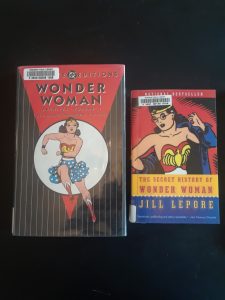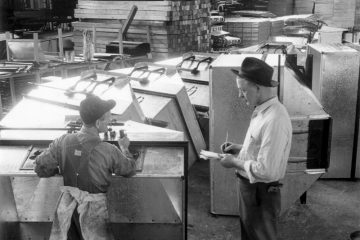INTRODUCTION:
Before I dive right into the main focus of this post, I’d like to share a few of my own personal thoughts on the subject. I grew up reading comics, and I have to say I never anticipated that super hero movies and comic book characters would become as popular as they have in the past ten years. I also had no idea there are so many amazing comic book and comic art special collection libraries! American comic books and graphic novels have a rather fascinating and controversial history, which is briefly detailed in the preceding section. The medium of the comic book also has played a significant role in both public and special libraries.
A BRIEF HISTORY OF AMERICAN COMIC BOOKS AND COMIC LIBRARIES:

Comic books have been around for a very long time, and can be traced back to the 18th century in Japan. However, the genre of American comic books, especially super hero and adventure titles began to take root in the 1930’s and 1940’s. Perhaps the most notable characters to come out of this period were Superman, Captain Marvel, Wonder Woman, Batman, and Captain America. For those readers interested in Wonder Woman, I’d highly recommend you get yourself a copy of Jill Lepore’s The Secret History of Wonder Woman as soon as possible. The book is an incredible work of cultural history, and a fine example of what good archival comic book research can yield in terms of scholarship. Lepore utilized the collections of several major comic book libraries, and she includes a great catalog of Wonder Woman comics in the back of her book.
The American comic book industry in the 1940’s used the back-drop of World War II for most of its super hero titles and stories, perhaps the most notable being Captain America. This rather exciting Golden Age of comic books transitioned into perhaps American comic books’ darkest period during the late 1940’s and early 1950’s. During this period, the publishing of rather gruesome yet highly influential horror titles, such as Eerie and Creepy, resulted in a targeting of comic books as the source of the corruption of youth and juvenile delinquency. This led to a trial, the creation of the Comics Code Authority, and the burning of comics by parents and children.
The late 1950’s through the 1970’s conversely ushered in perhaps the most radical, liberal, and game-changing period of American Comics. It is during this time that legends like Stan Lee, Jack Kirby, and Steve Ditko created arguably Marvel’s greatest and most relatable heroes and super hero teams, such as Spider-Man, Hulk, Fantastic Four, Avengers, and the Uncanny X-Men.

The period of the 1980s through the early 2000’s in American super hero comics, is perhaps my favorite. During this period they took the radical tone and stories of the 1960’s and 1970’s and pushed them in a darker, more complex, and self-aware direction. Some noteworthy creators from this period are Alan Moore, Neil Gaiman, Frank Miller, Grant Morrison, Todd McFarlane, Garth Ennis, Warren Ellis, and Ed Brubaker. More than half of those names are UK creators who caught the attention of DC Comics/Vertigo’s editor, Karen Berger. This wave of new talent created the edgiest and most unapologetically mature and violent comics to date. Titles from this period were the first to be regarded as forms of “high literature” by non-comic book readers and librarians. Among these titles are Watchmen, Saga of the Swamp Thing, Preacher, Transmetropolitan, Sandman, The Dark Night Returns, Sin City, and the more recent Saga and Criminal series.
There are many comic book libraries throughout the United States, and abroad, especially in Japan. Majority of these special comic book libraries, collections, and museums were started around the 1970s or later and their initial holdings were primarily donation based. These special comic book libraries primarily collect comic books from the earlier periods, whereas public libraries carry newer popular titles along with some collected editions of scans of older comics.
WHERE DO THEY WORK?
Believe it or not there are actually a lot of big American universities with interesting and rich comic book and art collections. The most notable of these are Michigan State University, Ohio State University, Virginia Commonwealth University, Yale, and Columbia. Michigan State has a rather great website and catalog for its comic art collection. Their collection numbers over 300,000 items, majority of which are comic books. Ohio State University is home of the Billy Ireland Cartoon Library & Museum, which holds over 67,000 comic books, and includes a Will Eisner manuscripts collection. Columbia’s collection has a focus on New York-area comic artists and industry professionals, such as Chris Claremont, who had a 16 year run with the title, Uncanny X-Men, and wrote interesting Wolverine stories. And Yale has a good Japanese Manga Collection held in its Japanese Special Collections at the Stirling Library.
Large national institutions such as the Smithsonian and Library of Congress also have rather extensive comic book and comic art collections.
And lastly, DC comics has an amazing library and archives that contains some serious gems, like an ashcan edition of Action Comics #1, and Michele Pfeifer’s Catwoman whip.
WHAT DO THEY DO?
The university comic art libraries all serve the purpose of preserving and making accessible the history of comic books, comic art, cartoons, and their culture by collecting the original artifacts and making them accessible to researchers and fans alike. Michigan State has microfilmed thousands of the comic books in its collection, with the large goal of “being able to provide a reading copy of every U.S. comic book”. MSU also had a rather fascinating exhibit on its European comics collection in 1998. The Billy Ireland Cartoon Library & Museum similarly hosts a great deal of educational programming, including the annual Cartoon Crossroads Columbus multi-day event.
The Library of Congress claims to have the largest publicly available comic book collection in the country, and as with its other collections is continuously acquiring new titles.
Benjamin Le Clear, who works at the DC Comics library and heads the archives and collected editions project, has the main duties of “taking care of the current collection, adding to the collection, getting books bound from the current stuff that we are doing and all the research that comes with the library”. He is still looking for a copy of Batman #49 (1948) to add to the library. The most frequent challenge Le Clear faces is making sure to properly handle the comic books while scanning them, considering their age and precarious condition.
WHAT TOOLS WILL BE HELPFUL
The biggest tool that will be helpful to scholars and comic book enthusiasts is more digital archival comic book collections. I also think that more partnerships and programming with the large comic book publishers would be a great way for the libraries to receive greater visibility and use. Furthermore, there is definitely a need for more comic book exhibitions, considering the popularity of super hero films, and the revived interest in comic books.
WHO DO THEY SERVE?
The target users of these collections and institutions are primarily, comic book scholars/historians, enthusiasts, and comic creators.
A FEW CONCLUDING THOUGHTS
I’d like to end this piece by saying that comic book/graphic novel readership is clearly at an all-time high, and public libraries have done a great job of keeping up with this phenomenon. Graphic novel collections are now staples in public libraries, and the digital lending platform Hoopla has an amazing digital comic book collection.
References:
Le Clear, B. (2018 August). DC insider: What I do…Benjamin Le Clear DC historian. DC Nation, 1, 4.
Further Reading/Resources:
List of Comic Libraries, Museums, and Archives



0 Comments